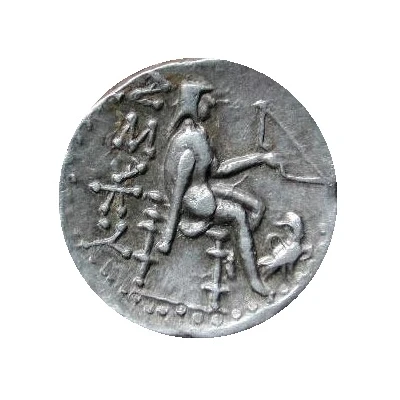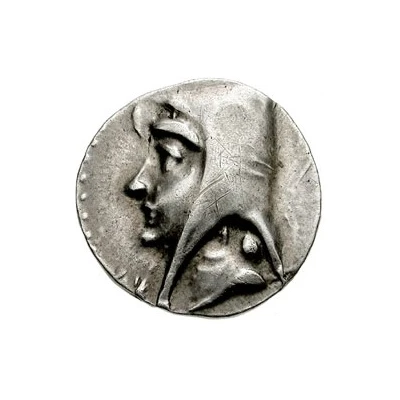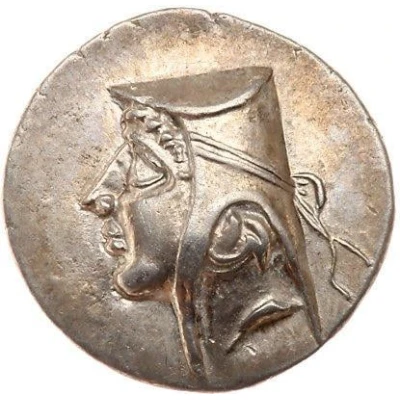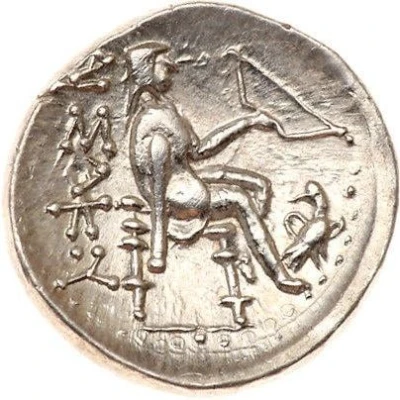


Drachm - Arsaces II Rhagae-Arsacia 211 BC - 191 BC
| Silver | 4 g | - |
| Issuer | Parthian Empire (Parthian Empire (247 BC - 224 AD)) |
|---|---|
| King | Arsaces II (217 BC - 190 BC) |
| Type | Standard circulation coin |
| Years | 211 BC - 191 BC |
| Value | Drachm (1) |
| Currency | Drachm (247 BC-224 AD) |
| Composition | Silver |
| Weight | 4 g |
| Shape | Round (irregular) |
| Technique | Hammered |
| Orientation | Variable alignment ↺ |
| Demonetized | Yes |
| Updated | 2024-10-10 |
| Numista | N#90673 |
|---|---|
| Rarity index | 95% |
Reverse
Beardless archer wearing bashlyk and cloak seated right on backless throne, holding bow in left hand; below bow, eagle stands facing, head left; circular border of pellets; behind archer, single-word Greek inscription.
Script: Greek
Lettering: ΑΡΣΑΚΟΥ
Interesting fact
One interesting fact about this coin is that it features a unique blend of Greek and Persian influences in its design. The obverse side of the coin depicts a portrait of Arsaces II, the ruler of the Parthian Empire, with a Greek-style wreath surrounding his head. The reverse side of the coin features an image of a seated Apollo, a common motif in Greek coinage, but with a distinctly Persian twist - the god is depicted wearing a long, flowing robe and a crown that resembles a Persian tiara. This blending of cultural influences reflects the complex history of the Parthian Empire, which was a major power in the ancient Near East and a crossroads of different cultures.



